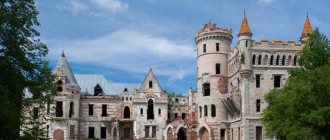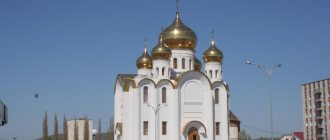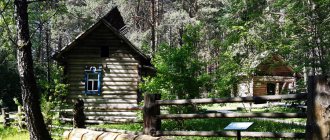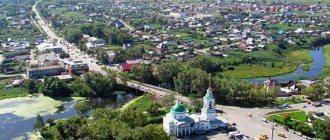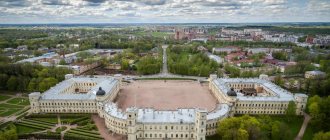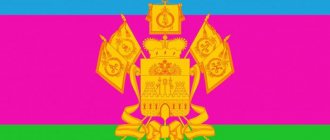The city of Kondrovo, Kaluga region, was founded in 1938. Previously, in its place there were workers' settlements, and in front of them there was the village of the same name and the Troitskoye village with its own villages and, accordingly, owner-landowners.
This city is located on both banks of the Shani River, 46 km from Kaluga, on a mound in the central part of Russia. Its area is 2100 hectares.
Hydronym
The settlement began to be called Kondrovo - the name of its first master. Dmitry Kondarev was granted the right to hereditary ownership of the coastal areas of the Shani River for his participation in the campaign against Lithuania. In 1858, the Howard Stationery Mills were founded, and then part of the land of the village of Condrova was transferred to the Howard Company. In 1871 he and his family left for Great Britain. A railway station located on the territory of a region such as the Kaluga region now bears his name; the city of Kondrovo was subsequently built around it.
Links[edit]
Notes[edit]
- ^ abcde State Committee of the Russian Federation on Statistics. Committee of the Russian Federation for Standardization, Metrology and Certification. No. OK 019-95 January 1, 1997 “All-Russian classifier of objects of administrative-territorial division. Code 29 208", ed. changes No. 278 / 2015 dated January 1, 2016. (Goskomstat of the Russian Federation. Committee of the Russian Federation for Standardization, Metrology and Certification. No. OK 019-95 January 1, 1997. Russian classification of administrative divisions) (OKATO).
Code 29 208 , as amended by Amendment No. 278/2015 of January 1, 2016). - ^ a b Federal State Statistics Service (2011). “All-Russian Population Census 2010. Volume 1" [All-Russian Population Census 2010, vol. 1]. All-Russian Population Census 2010 [All-Russian Population Census 2010]
. Federal State Statistics Service. - "26. The size of the permanent population of the Russian Federation by municipalities as of January 1, 2022". Federal State Statistics Service. Retrieved January 23, 2022.
- ^ abcde Law No. 7-OZ
- "On the Calculation of Time". Official Internet portal of legal information
. June 3, 2011. Retrieved January 19, 2022. - Post office. Information and computing center of OASU RPO. ( Post office
).
Search for postal service objects ( postal Search for objects
) (in Russian) - ↑
Federal State Statistics Service of Russia (May 21, 2004).
“The population of Russia, the constituent entities of the Russian Federation as part of federal districts, urban settlements, settlements, settlements is 3 thousand or more people” [Population of Russia, its federal districts, federal districts, districts Urban settlements, rural settlements - administrative centers and rural settlements with a population of over 3,000] (XLS). All-Russian Population Census 2002
. - “All-Union Population Census of 1989. The current population of union and autonomous republics, autonomous regions and districts, territories, negative phenomena, urban settlements and rural areas of the City of Kaluga,” for which other dates for entry into force have been established. (Legislative Assembly of the Kaluga Region. Law dated December 28, 2004 No. 7-OZ “ On establishing the boundaries of municipalities on the territory of the administrative-territorial units “Babyninsky district”, “Borovsky district”, “Dzerzhinsky district”, “Zhizdrinsky district”, “Zhukovsky district”, “Iznoskovsky district” ", "Kozelsky district", "Maloyaroslavetsky district", "Mosalsky district", "Ferzikovsky district", "Khvastovichsky district", "City of Kaluga", "City of Obninsk", as well as on assigning them the status of an urban settlement, rural settlement, urban district, municipal district
as amended by Law No. 620-OZ dated September 29, 2014.
On amendments to the Law of the Kaluga Region “On establishing the boundaries of municipal entities located on the territory of the administrative-territorial units “Babyninsky District”, “Borovsky District”, “ Dzerzhinsky district", "Zhizdrinsky district", "Zhukovsky district".
", "Iznoskovsky district", "Kozelsky district", "Maloyaroslavetsky district", "Mosalsky district", "Ferzikovsky district", "Khvastovichsky district", "City of Kaluga", "City of Obninsk" and on assigning them the status of an urban settlement, rural settlements, urban districts, municipalities . Comes into force after official publication, with the exception of clauses on the municipal formation "City of Kaluga", for which different dates of entry into force are indicated.).
Development
The enterprise that Howard founded was the basis of the county's material sufficiency. It occupied 463 acres of land. On this territory there were 2 schools, 3 factory schools, a hospital for 10-15 beds, an outpatient clinic, and 2 trading shops.
During the Second World War, the city of Kondrovo, Kaluga region, was under fascist occupation for a year. Famous poets became his guests during this difficult period.
In the 70s, the city began construction of multi-storey buildings, built 3 bridges, 2 of them for pedestrian use, opened public gardens and a large stadium. Nowadays in Kondrovo there are schools, colleges, libraries, a palace of culture, and a museum.
Leafing through the chronicle of the war in Kondrovo
OCCUPATION OF KONDROVO
For more than 100 days and nights, Nazi soldiers raged in the city of Kondrovo and in the region. They killed, burned, and hanged over 500 innocent people. Almost 600 people were taken into slavery. During the occupation, the Nazis burned 90 settlements in the region. 5,576 houses of collective farmers burned down. Fascist looters destroyed factories, local industrial enterprises and industrial cooperatives. The Kondrovo paper mills did not escape a sad fate. Despite the fact that their management and workers, at the cost of enormous efforts, managed to organize the evacuation to the rear of a significant part of the equipment (paper machines, steam boilers, diesel engines, turbo generators, etc.), it was impossible to remove or dismantle absolutely everything. Everything that was of any value from the remaining materials, inventory and technical equipment was mercilessly plundered by the invaders. The anger of the Germans was intensified day by day by the fact that their attempts to launch factories and organize paper production were unsuccessful. Literally on the eve of the advance of the Red Army units into the city, the Nazis committed another barbaric act: they blew up the paper mill dam. During the months of occupation, the damage inflicted by the Nazis on the area was enormous. For industrial enterprises alone it exceeded 45 million rubles. Immediately after the liberation of the city, in the severe January frosts, the residents of Kondrovo began to restore the pulp and paper mill. In wartime conditions this was very difficult to do. People sometimes did not leave the factory floors for days, malnourished and lacking sleep. And yet, the courage and work enthusiasm of the Kondrovskaya residents did the job: in March 1942, the Kondrovskaya and Troitskaya paper mills produced the first batches of paper, after a long break. The efforts of the money makers were then directed towards restoring, first of all, the energy sector, the pulp mill and the blown up dam. The work was especially intense in the summer and autumn of 1944. Soldiers based in the area of the military unit also took part in them. By 1947, the 1st, 2nd, 3rd, 5th, 6th, and 7th paper machines were operational. The total output of these machines was then 35.5 tons of paper per day. The city of Kondrovo and our region as a whole were in the zone of the fascist hordes advancing on Moscow. The invaders intimidated people, destroyed them, and sought to turn them into dumb working cattle. But the Dzerzhin residents, who found themselves in temporarily occupied territory, deeply believed in the victory over Nazi fascism. The combat group of Kondrovo residents, which included A. Sherstikov, A. Strelkov, G. Filimonovsky, S. Kulakov, M. Tsvetkov, I. Vorontsov, I. Turanov, N. Polzikov, M. Petrova, P. Shevlyakov, N. Brovtsev , N. Alekseev and A. Murlykin, together with the soldiers of the Red Army, participated in the fierce battle of the village of Tovarkovo. They fought until the last drop of blood. They died, but did not retreat. The city of Kondrovo was of great strategic importance both in the plans of the Soviet and German commands. Almost next to the city there was a railway junction with access to Moscow, Vyazma, Tula, Sukhinichi. The Germans in the area of Kondrovo and adjacent settlements along the Shan River, in the main direction of the advancing Soviet troops, created a twenty-kilometer unified defense with previously prepared positions for machine guns. Approaching the fortified line, units of the 133rd Rifle Division under the command of Major General Zakharov and the 5th Guards Rifle Division under the command of Major General Mironov of the 49th Army began a battle. The first attempts to capture individual villages and break through the defenses were unsuccessful. Commander of the 49th Army, Major General I.G. Zakharov decided to take the city in a roundabout way. The operation began on the night of January 19, 1942, and by the morning Kondrovo was liberated from the Nazi invaders. The bold, risky, daring operational-technical pincer strike to defeat Kondra's German group so stunned the Germans that they were unable to provide organized resistance to the onslaught of the formations of the 49th Army. In the city cemetery, 779 soldiers who died in January 1942 in the battles for the liberation of Kondrov and nearby settlements are buried in a mass grave.
From the memoirs of V.A. Gorbachev, who lived through a terrible time... Autumn 1941: Kondrovo under occupation. The Nazis ruled almost every house, taking away livestock and food supplies. “Austrians lived with us, and then Finns,” recalls Valentina Alekseevna. - The children were not harmed. We gave them soap, and they gave us table scraps. We were happy about this too. I remember how I ran to church with the neighbor boys. We climbed the bell tower and watched the sky. If enemy planes appeared on the horizon, bells were rung so that people had time to hide. And how much fear we suffered when our soldiers liberated the city, only God knows! It rumbled so loudly that it hurt my ears. When there was a bombing, we took refuge in a neighbor's cellar. After the Nazis were expelled from Kondrov in the winter of 1942, Valentina voluntarily went to the front. She was sent to a communications battalion near Yukhnov. Two years later, she ended up in a medical battalion in Minsk, caring for the wounded. Memories... On October 10, 1941, fascist troops entered Kondrovo. The new occupation “order” fell upon the residents of Kondrovo. Robbery, violence. Hungry soldiers chased chickens and took away cows and pigs. The commandant of the city of Buk, appointed by the command, ordered his order to be posted. Under threat of execution, it was forbidden to walk on the streets after 10 p.m. A few days later other orders followed. The Germans demanded that we hand over our weapons and radios. Communists and Jews were ordered to report to the commandant's office and register. A German factory manager, Hitler's fosterling Fabijans, also appeared. And he began to write orders. One of them literally said the following: “I oblige you to hand over everything that belongs to the factories by 15:00 on November 15th. Every resident who is found with stolen items, tools and equipment after November 15 will be shot.” The occupiers wanted to restore the paper mills as soon as possible, although this was simply impossible. The Germans drove captured Red Army soldiers into the city. They were driven into a room where there had been an evening school before the war. And every day they took me to work. Hungry, naked in thirty-degree frost... They fell and died. The Nazis covered the corpses with snow right there, in the school yard... The underground hospital It was created by doctors and nurses of the Kondrovsky district hospital in the fall of 1941. The front was already close. The chief physician of the district hospital, Olga Ivanovna Osetrova, gave the necessary orders to prepare civilian patients and wounded soldiers for evacuation, and went to the Govardovo railway station to receive the cars that were intended for the evacuation of the hospital. The head nurse Varvara Semyonovna Ustinova was already ready to carry out the order of the head physician. Everyone heard the whining rumble of the fascist plane. Another raid on the city. There were huge explosions of bombs: one, two, three. The glass shattered by the blast wave rang and doors flew off their hinges. It seemed as if bombs were falling nearby. Wounded people came out, crawled out of the wards, hobbled on crutches. Someone shouted: “Sister, will there be a train or what?” - You see what’s happening, right? - Varvara Semyonovna reassured. “Now the chief doctor will call and the cars will be driven along the branch line almost to the hospital.” Be patient, dear ones... Suddenly there was a kind of piercing silence. And there was a sharp telephone call. “Well, we’ll get the order now,” Varvara Semyonovna grabbed the phone and heard the voice of the head physician: “Semyonovna, there will be no evacuation.” The station was smashed, the rails and switches were damaged, and our cars were in pieces. There is no one and no time to repair it. The Germans are already in the village of Ostrozhnoe. We're just a stone's throw away. Tell the wounded: those who are able, let them leave. On foot... Let the local patients disperse. I will be right back. Half an hour later, Olga Ivanovna appeared at the hospital. Doctors, sisters, nannies surrounded her: what to do? Wounded soldiers and commanders who were able went to Detchino. There are a few bedridden ones left. Olga Ivanovna, as the chief doctor of the hospital, preparing for evacuation, ordered all medical workers to remain in place. She took a passing car to the district executive committee. But no one there could answer her questions or give advice. She saw how many Kondrovo residents hastily left the city. Lines of refugees on foot and on horse-drawn carts moved in the direction of Narofominsk and Serpukhov. Returning to the hospital, I learned that some doctors and nurses had been evacuated. Anxiety filled my heart. But then I saw therapist Ivan Petrovich Lebedev, the most experienced doctor Lyubov Yakovlevna Artsibasheva, and my spirits soared: “Well, shall we continue to work, Ivan Petrovich?” And then the head nurse returned with her husband, Varvara Semyonovna and her husband. We didn’t make it to Serpukhov: the Germans caught up. We decided firmly: to work as before. And all this happened in a town occupied by fascist troops. Everyone was in terrible tension. German soldiers rode up on motorcycles, stared at the hospital building, and muttered about something. The cold weather had already begun; the Germans could occupy the hospital. But they were also afraid of the partisans of Ivan Kozlov’s detachment, which was already operating in the area. The forest is nearby! “By that time, all our patients had left and only the non-walking wounded remained: several soldiers and civilians. Olga Ivanovna understood: if the Germans occupied the hospital, they would throw out all the wounded. And so she chose the moment and ordered, on a dark November night, observing (as much as possible) peace and quiet, to drag the beds into the wooden houses of the hospital town. The wounded were also transferred here. Snow. What products there were, they ran out. Olga Ivanovna understood that wounded people could die of hunger. She glanced at the only horse. Will you have to score? Ivan Petrovich suggested going around the nearby villages, asking for potatoes, bread... “One evening,” Anna Borisovna Barinova recalled, “we were feeding the wounded. I hear a man moaning in the yard. I jumped out into the street and saw a man in military clothing. He turned out to be a Russian pilot. He was shot down near the village of Bolobnovo. Good people hid him for a while, but they could not heal his wounds, so they transported him to the Kondrovo hospital. The wounded pilot was dressed in a woman's dress, his head was tied with a scarf and he was placed with the women. And there was also a wounded tanker. His name was Nikolai. German soldiers increasingly began to appear on the hospital grounds. They asked who is treated in wooden houses? There is typhus, they were told. Lyubov Yakovlevna ordered signs to be posted: “Typhoid! Do not enter!" one of the German officers sought an answer to the question: “Is there a man there?” And there were two dozen men there. We decided to move all the men underground. Potatoes, all sorts of pickles, and cabbage used to be stored there. The inhabitants of the hospital houses kept an eye on who was wandering around the territory, the Germans who were already in charge of the main building. Here they set up a field hospital. One evening, nurse Varvara Semyonovna was walking around the yard and saw two men. “Are you looking for someone?” she asked. The strangers called themselves: “Military surgeon Barsky, military doctor Dunaevsky.” The surgeon managed to perform several complex operations in a small operating room, which was tripled in a wooden house. He also saved the life of the wounded pilot. And shortly before the Germans fled, the soldiers, on the orders of the officer, dropped the sign “Typhus! Do not enter!” they entered the house where there was an operating room. At this moment, Barsky and Dunaevsky operated on the wounded man. We barely begged the officer to let the doctors complete the operation. “We will report to the commandant’s office ourselves,” assured Barsky and Dunaevsky. Barsky was hidden in the basement where the wounded men were. And Dunaevsky decided to leave. The Germans detained him and shot him... During all 100 days of occupation, the doctors, nurses, and orderlies who remained in the district hospital worked conscientiously, without receiving anything. They nursed the wounded, including children. They collected firewood in the forest to heat the stoves, made their way to the villages, asked for bread, potatoes, cabbage and fed the wounded. Liberation of Kondrov During the harsh winter of 1942, the territory of the Dzerzhinsky region was liberated from the Nazi invaders. The soldiers of the 1st Guards Regiment, breaking into the enemy's defenses with the fire of their guns, were the first to break into the city of Kondrovo and liberate it from the Nazis. Here the artillery regiment was awarded the Guards Banner. In the photo: guards-artillerymen with an unfurled banner on the streets of the city.
The occupation of the Dzerzhinsky region began on October 10, 1941 and lasted until January 1942. During this time, the Germans destroyed 4,793 residential buildings and 2,356 collective farm buildings. The local population also suffered: 524 people died, 598 people were deported to Germany.
Our area was liberated by units of the 49th Army, as well as soldiers of the 133rd Infantry Division. One part of it went towards the village of Adamovskoye and the village of Prudnovo. The second division advanced through the village of Tolkachevo (now Stefanova-2 Street) and began attacking the Nazis on January 18. The 173rd Infantry Division advanced from the south...
The liberation of the city of Kondrovo took place on January 19, 1942 during the Moscow counter-offensive operation of Soviet troops. The advancing units of the 49th Army encircled Kondrovo from the north and south with pincers. Under the threat of encirclement, the Nazis hastily fled, not having time to set fire to houses.
The commander of the 49th Army, Lieutenant General Ivan Grigorievich Zakharkin, recalling these events, later said:
“The Kondrovo-Polotnyany Zavod line was prepared in advance by the Nazis for defense. In the spaces between them, trenches were built with strong dugouts and bunkers for heavy machine guns and guns. In the main directions of the front line of defense, the Germans erected snow banks, dousing them with water and securing them with barbed wire with mortar holes. Our units were faced with the task of breaking through this fortified zone and defeating the enemy’s Kondra grouping.
The Nazis tried to repel the onslaught of Soviet troops with heavy fire from mortars, machine guns and machine guns. But the skill of our commanders, their ability to maneuver fire and movement, the assertiveness and endurance of the fighters ensured the success of the offensive. Swiftly outflanking the enemy from the flanks and rear, the skiers of the commander of the 5th Guards Rifle Division, General P.V., acted in this operation. Mironov.
At dawn on January 19, units of this division attacked the fascist German troops on the flank from Nikolsky (now on part of this territory in the city of Kondrovo there is a street named in honor of Lieutenant General Pavel Vasilyevich Mironov). The Siberian ski battalion boldly made its way behind enemy lines, destroying its convoys and thereby ensuring the success of the offensive of our units from the front.
By capturing the Linen Factory and breaking through the front north of Kondrov, the Red Army troops created a threat of encirclement of the fascist group directly in the Kondrov area. The enemy, pursued by our units, skiers, and artillery, was forced to hastily retreat, littering their path with corpses and abandoning vehicles and guns.”
During the liberation of the city of Kondrovo, most of the German occupiers died, and some were taken prisoner. When leaving the city, the Nazis blew up the dam. Near the railway station near the depot, a long-term battle broke out for many hours with armed German guards defending the loot in the city of Kondrovo. Desperate, the surviving fascists fled through Galkino, Ostrozhnoe towards Yukhnov...
The Soviet advance soon slowed down. In March 1942, in the Yukhnov area, the front stabilized for a long time, and our liberated city found itself in the front line for almost a year and a half.
After the liberation, the city of Kondrovo became the administrative center of the Smolensk region. Administrative institutions, hospitals, headquarters of several military units, and various rear units were located here, a special place among which was occupied by the training regiment stationed on Bald Mountain. There, hundreds of recruits lived in dugouts and tents. After a short training, they became machine gunners, snipers, mortarmen, medical instructors, and signalmen. Having received a military specialty, they went to the front, which was very close, along the Ugra.
Transport and economics
The city is located on the most important highway in the region. It has bus and railway communications with Kaluga, Tula, Vyazma and Moscow.
Kondrovo, Kaluga region, is small, but has a developed industry. Economically significant enterprises are a crushing and screening plant, food and agricultural production, and hygiene supply factories. However, the dominant one is the pulp industry.
Climate zone
The climate of the city of Kondrovo, Dzerzhinsky district, Kaluga region, is moderate continental with distinct seasons. In summer the weather is generally acceptably hot and humid. Winter period - with a stable amount of precipitation in the form of snow, quite cold. The predominant air front in winter and summer is the continental masses of temperate latitudes.
Spelling features
In the normative Grammar Dictionary of Zaliznyak about the names of settlements in -ovo, -evo, -ino
(that is, about the variants of use: was in Kondrovo/Kondrovo) it is said: The reference to this paragraph indicates that it is very common - both in oral speech and in print - to use this word as unchangeable, for example,
lives in Kuntsevo, We are approaching Ostankino, a kilometer from Borodino
, instead of literary
he lives in Kuntsevo, we are approaching Ostankino, a kilometer from Borodino
.
The prevalence of this phenomenon is so significant that, apparently, it is already approaching the status of an acceptable option... So it says in the application. Previously, such variability was allowed only in combination with the word “city”, for example: I was in the city of Kondrovo (
compare
: “city of Moscow” in passports and other records).
Attractions
Having visited Kondrovo, Kaluga region, you should definitely visit its memorable places, which are part of the history of the city and all of Russia. The Church of the Savior Not Made by Hands was erected in 1820. The construction was financed by P. Shchepochkin. During the years of repression, the church was closed. In the sixties the building was used as a store. Since 1993, it began to serve as a sanctuary. It was reconstructed in 2008. Now the temple is located on Komsomolskaya Street.
In the city there is a monument “50 Years of Victory”, dedicated to the soldiers who did not return from the war. It is located on Corporate Street. Near this monument there is an Alley of Heroes in honor of the townspeople of Kondrovo who died in Afghanistan and Chechnya. A monument to the poet was erected on Pushkin Street. The author of this sculpture is a native of Kondrov - Svetlana Farneeva.
Another monument dedicated to the heroes who fell during the Second World War was erected on Pronina Street. The Church of the Life-Giving Trinity is the oldest sanctuary in Kondrovo (1818). During the years of repression it was used as a storage facility for a brewery. In 1988 it was transferred to the Russian Orthodox Church.
The paper mill building, built at the end of the 18th century, is located on Cooperative Street. This is one of the interesting places where you can get acquainted with the history of the city.
Let's sum it up
The city is constantly visited by tourists. This is due to the huge number of historical monuments, as well as to the population, which respects its history and will never give up on it. Speaking about the number of people living here, it must be said that it is gradually decreasing. 2011 was the last year when population dynamics increased. After this period the numbers begin to decline.
The residents are hospitable, treat visitors well and are happy to rent out their apartments or rooms to them. Prices are different, they depend on the part of the city and the arrangement of the premises.

